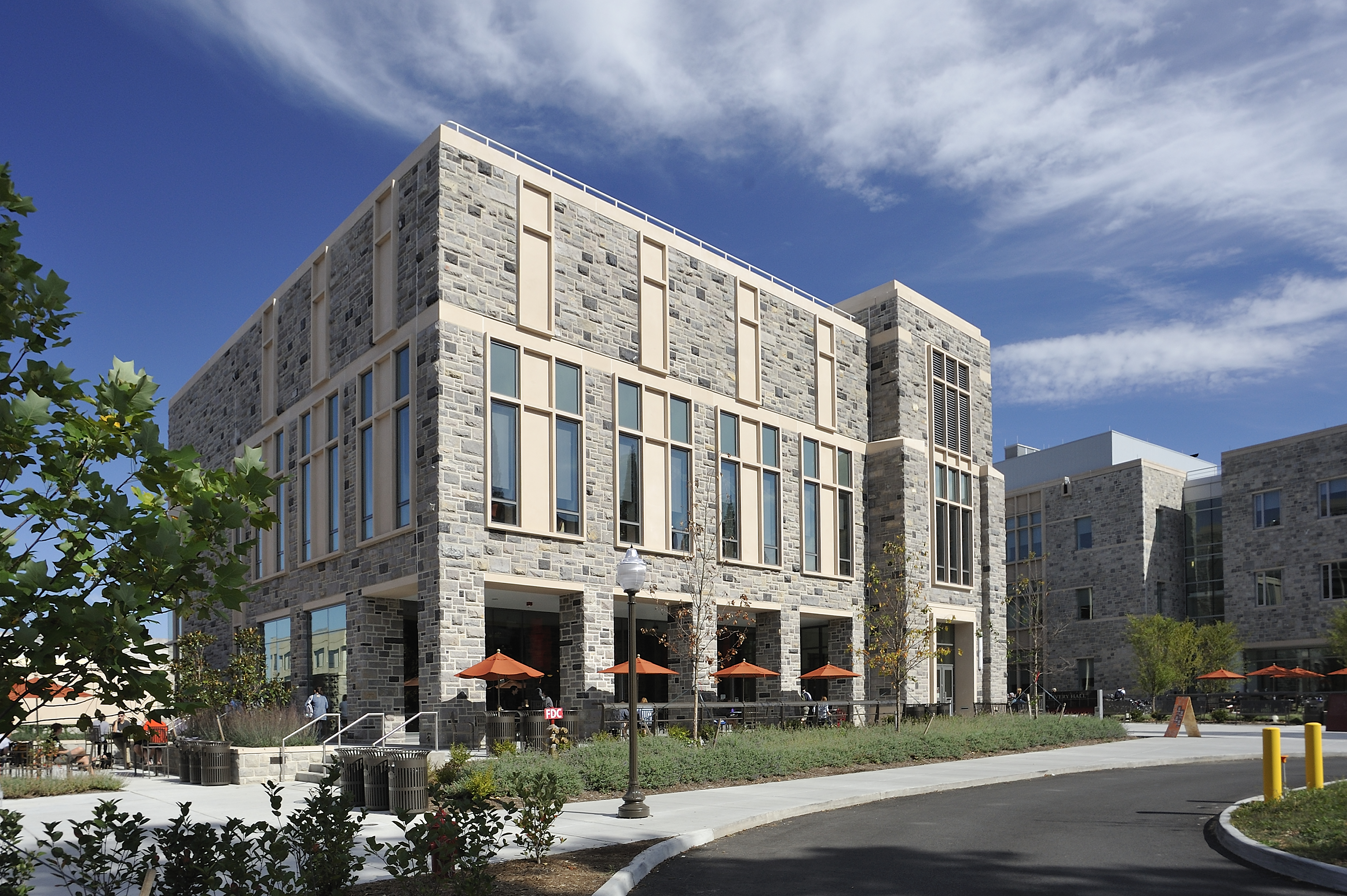Lavery Hall LEED Silver certified; sixth university facility endorsed by U.S. Green Building Council

As innovative as it is inviting, Virginia Tech's Lavery Hall has been awarded Leadership in Energy and Environmental Design Silver certification, as established by the U.S. Green Building Council.
Lavery Hall joins a growing list of university facilities that have been LEED certified.
LEED certification is a performance-oriented rating system designed to address specific environmental impacts inherent in the design, construction, operations, and management of a building.
“Even on a campus as committed to sustainability as Virginia Tech, this recognition stands out because it involved so many partners,” said Patty Perillo, vice president for student affairs. “Student and academic affairs and administrative services staff, including architects and designers, all collaborated to create this state-of-the-art facility that serves so many, in so many ways. LEED Silver certification for Lavery Hall is just another example of what a diverse group of committed people can accomplish when they share a common vision,” Perillo said.
Lavery Hall was opened in fall 2012. The three-story building has 77,301 gross square feet and includes Turner Place at Lavery Hall, a trend-setting dining center; six general-assignment classrooms; and office space for Services for Students with Disabilities. It is named Lavery Hall in honor of the university’s 12th president, William E. Lavery.
“During construction, we diverted 94.65 percent of waste from landfills,” said David Chinn, project manager for Lavery Hall. “This began with the removal of the existing parking lot asphalt which, instead of going into dumpsters and then to landfills, was sent to a different plant where it was ground up and reused. Similar activities continued during construction, and items were reused and recycled as often as possible,” Chinn said.
The Lavery Hall project received LEED certification points for use of low-emitting adhesives and sealants, paints and coatings, carpet, and composite wood. It was also recognized for using recycled products and regional materials in construction, for water use reduction, and for use of certified wood.
To date, Virginia Tech has received LEED certifications for five projects on the Blacksburg campus: the Visitor and Undergraduate Admissions Center, the Theatre 101/Henderson Hall renovation, the football locker room addition, and ICTAS II, a facility of the Institute for Critical Technology and Applied Science.
In addition, the Virginia Tech Research Center -- Arlington is LEED certified Gold for core and shell and has Silver certification for the interior.
Dedicated to its motto, Ut Prosim (That I May Serve), Virginia Tech takes a hands-on, engaging approach to education, preparing scholars to be leaders in their fields and communities. As the commonwealth’s most comprehensive university and its leading research institution, Virginia Tech offers 240 undergraduate and graduate degree programs to more than 31,000 students and manages a research portfolio of $513 million. The university fulfills its land-grant mission of transforming knowledge to practice through technological leadership and by fueling economic growth and job creation locally, regionally, and across Virginia.




